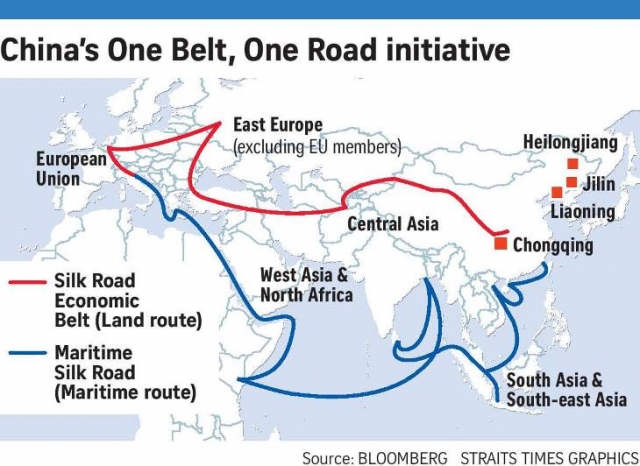China’s OBOR Initiative
The South Caucasus has a strategic locational advantage by connecting Europe with Asia and the Middle East. After the collapse of the Soviet Union, three internationally recognized independent states – Armenia, Azerbaijan, and Georgia – emerged in the region and all three have pursued distinctively different foreign policy goals since their inception.
All the three South Caucasus states are interested in boosting their international cooperation and expanding their relations with other significant actors besides Russia and the West. Given the economic downturn in Russia and the EU internal problems — Armenia, Azerbaijan, and Georgia are keen to involve additional international investments to foster their economic development. In this context, China’s One Belt, One Road initiative is perceived as a significant opportunity. All three states are seeking ways to be included in this initiative.
There are two projects which pass through the South Caucasus and have a potential to be included in OBOR.
One is the Trans–Caspian International Transport Route which starts from China, runs through Kazakhstan, Caspian Sea, Azerbaijan, Georgia and then to Europe either via Georgian Black Sea Ports or via Turkey using Baku–Tbilisi–Kars railway. This option gives an opportunity to transport goods from China to Europe circumventing Russia. In May 2017 Georgia and China signed Free Trade Agreement which should boost bilateral trade as well as transit. Both Azerbaijan and Georgia are members of the Asian Infrastructure Investment Bank (AIIB) which has provided $600 million in loans to Azerbaijan for construction of the TANAP gas pipeline and $114 million in loans to Georgia for the Batumi bypass road project.
The second project is the Persian Gulf – Black Sea multimodal transport corridor which envisages connecting Iran with Europe via Armenia and Georgia. Negotiations have been launched in 2016 and the agreement will not be signed till the end of 2018. One of the key issues in this project is the modernization of transport infrastructure connecting Armenia with Iran and Georgia. The current economic blockade imposed on Armenia by Turkey and Azerbaijan has left Armenia’s other two neighbors, Iran and Georgia, as its only two land routes to the outside world.
An erstwhile Armenia – Iran railway which passes through Nakhijevan (Azerbaijan) is closed due to the on-going Nagorno-Karabakh conflict. In 2012 through an Asian Development Bank loan (later, the EU’s Neighborhood Investment Facility – NIF – and the EIB also joined in) Armenia launched the 556-kilometre North-South Road Corridor project which will connect the Armenia – Georgia, and Armenia – Iran borders, facilitating transit via Armenia. In addition, a 145 kilometer stretch of road along the corridor between Yerevan and Bavra will be rehabilitated.
Given the significant role of Iran in OBOR, currently, Armenia is seeking ways to connect “Persian Gulf – Black Sea” corridor with OBOR thus establishing additional China – Europe transport route passing through Iran, Armenia and Georgia. As the EU and China are struggling to keep Iran nuclear deal alive after President Trump decision to leave the agreement, there is a potential of expanding economic cooperation between Tehran, Beijing, and European countries. Armenia, Georgia, and Iran may jointly start negotiations with China to include “Persian Gulf – Black Sea” project into OBOR initiative potentially involving Chinese investments in transport infrastructure modernization programs.
As such, the OBOR initiative may create additional possibilities for the South Caucasus states to diversify their economic dependencies and include additional foreign investments to boost local economies. As for China, the transit routes passing through the region will establish additional possibilities to increase its economic influence both in the post–Soviet space and the Middle East and diversify its trade routes towards Europe.
By Shawn Wayne











